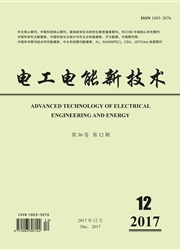

 中文摘要:
中文摘要:
非接触供电技术由于其供电灵活,具有少维护性及安全方便的优点,在移动设备充电场合、油田、水下供电场合具有很大的优势.本文主要针对串-串补偿、串-并补偿两种最为常用的非接触谐振变换器进行了分析.通过对两种变换器输出电压增益、输入阻抗的分析,说明了串-串补偿非接触谐振变换器更适合采用自激控制方法工作于高频增益交点,可获得较为恒定的输出和较高的效率;而串-并补偿非接触谐振变换器则更为适合采用锁相环(Phase lock loop,PLL)控制.最后,通过一台60 W串-串补偿和一台100 W串-并补偿非接触谐振变换器的实验证明了分析的正确性.
 英文摘要:
英文摘要:
Contactless power transmission (CPT) is water applications due to its safety, convenience, h of g igh reat superiority in mobile devices, minal, under flexibility and low maintenance cost. This paper focuses on the analysis of SS-type contactless resonant converter (CRC) and SP-type CRC. The input to-output voltage gain and the input impedance of both converters are discussed in detail. With the help of software Mathcad, the suitable control strategies for the converters are analyzed. For the SS-type CRC, nearly constant voltage gain and high efficiency can be obtained with self-oscillating control, by which the operation frequency is set at the higher voltage gain intersection. For the SP-type CRC, phase lock loop (PLL) control strategy is more suitable. Finally, a 60 W SS-type CRC and a 100 W SP-type CRC are fabricated and the experimental results verify the validity of the above analysis.
 同期刊论文项目
同期刊论文项目
 同项目期刊论文
同项目期刊论文
 期刊信息
期刊信息
